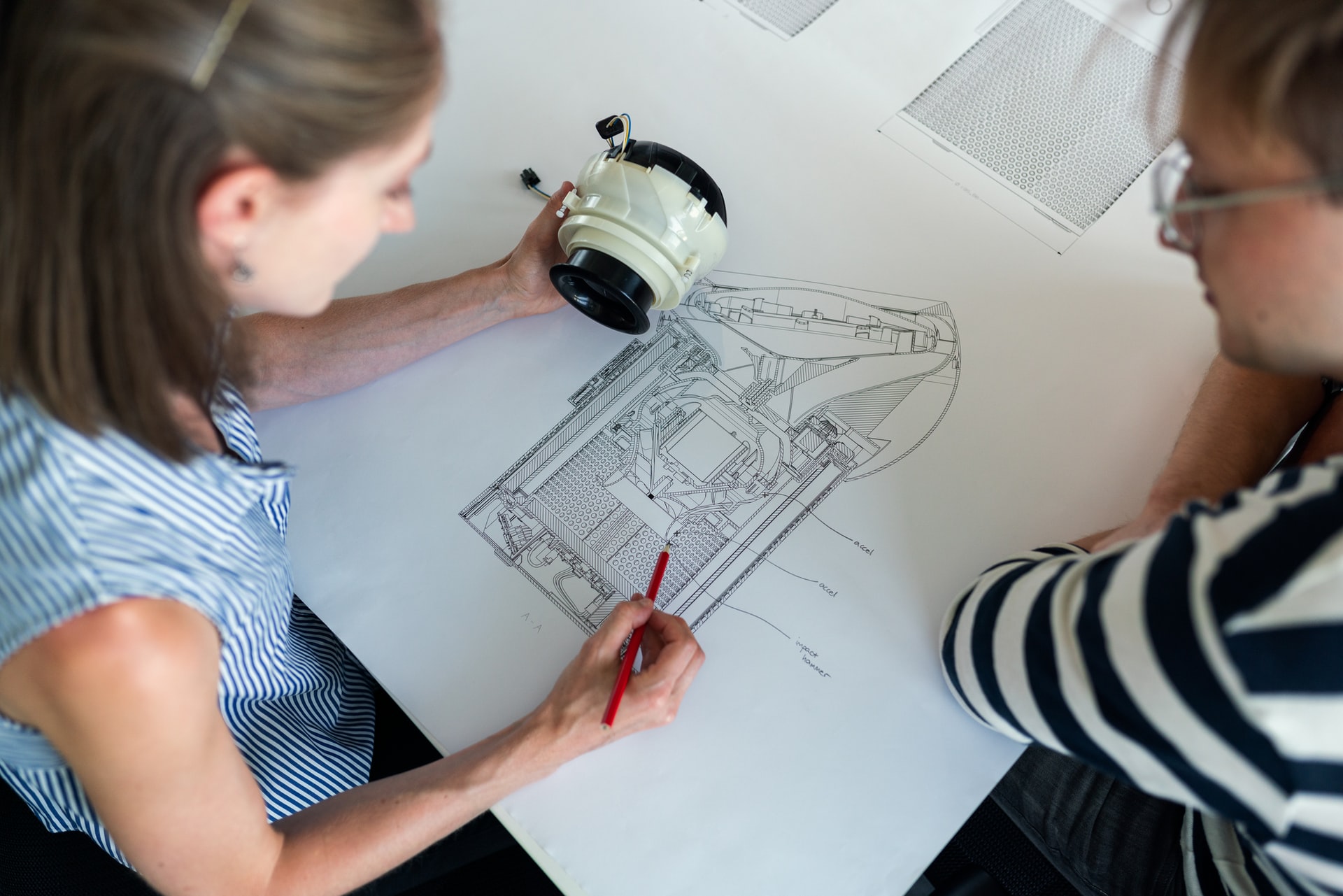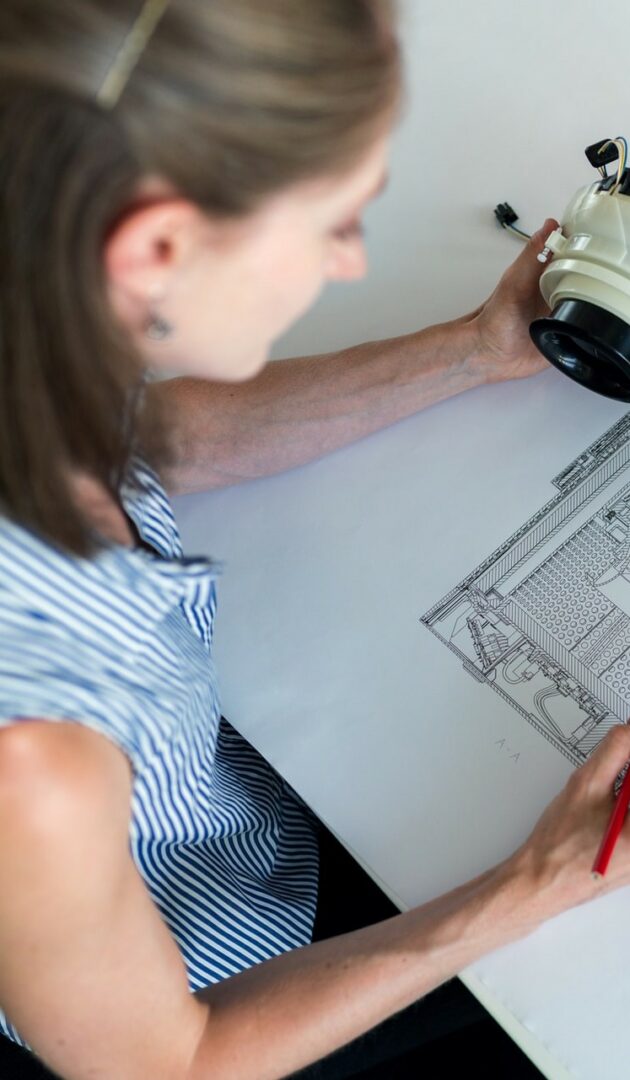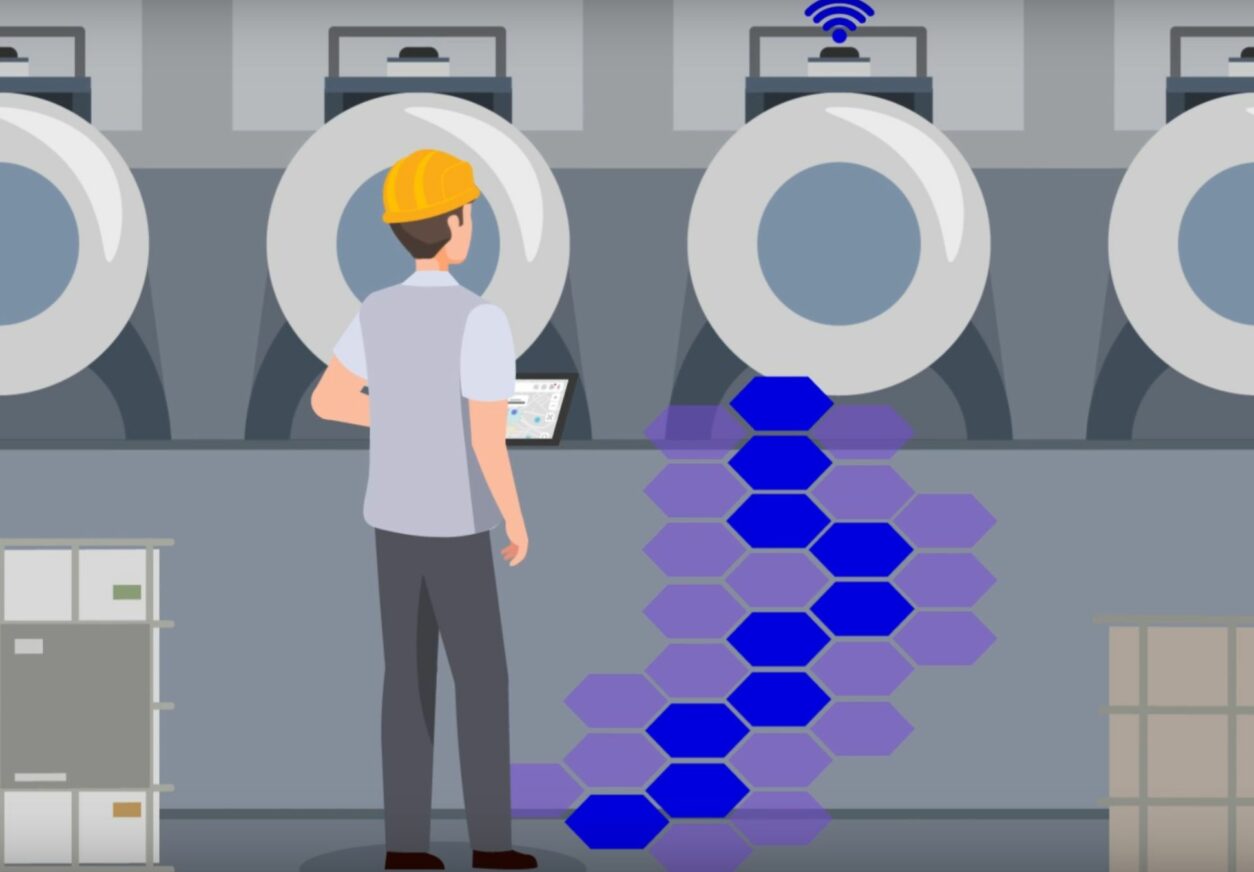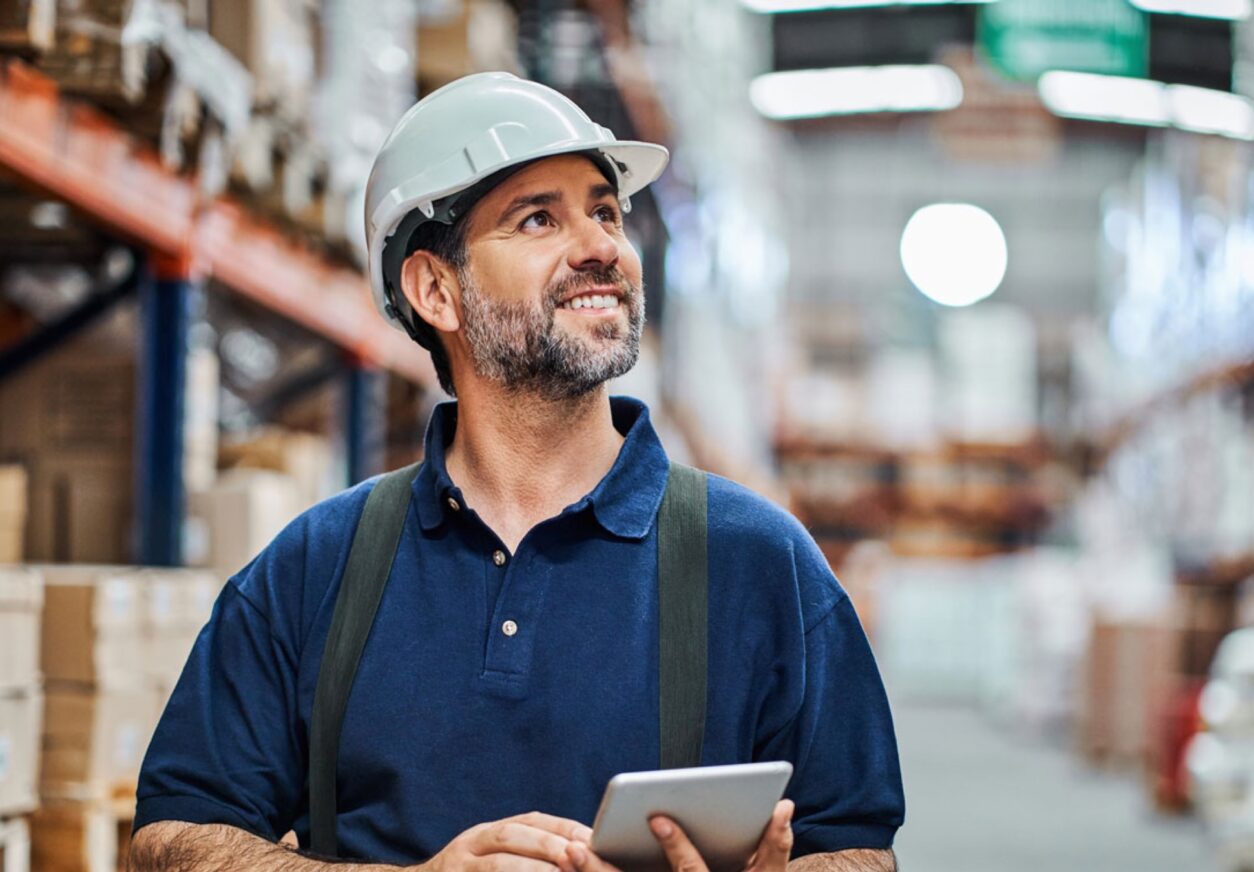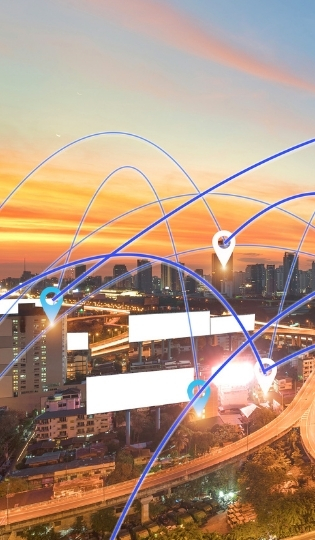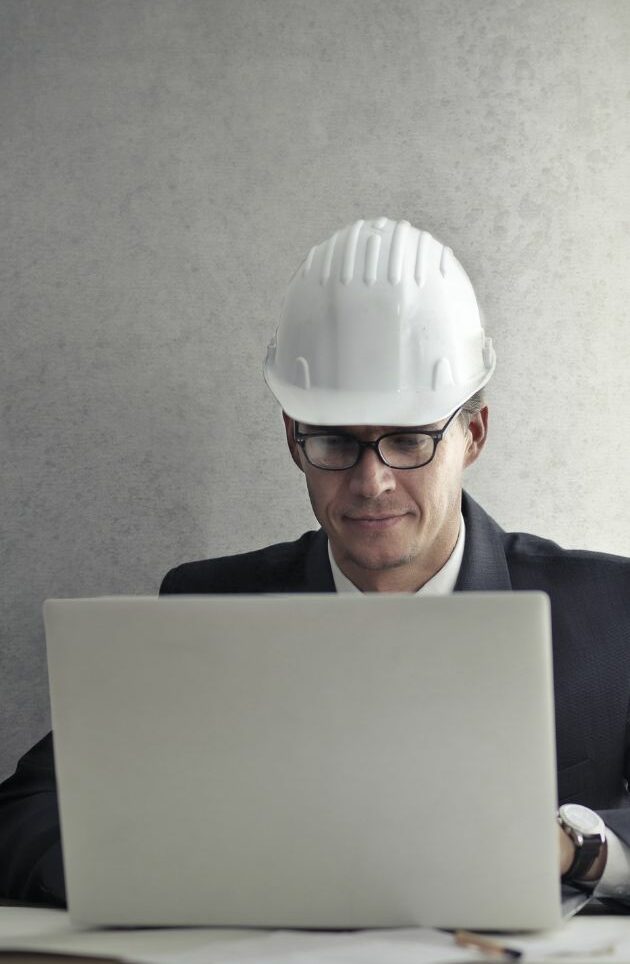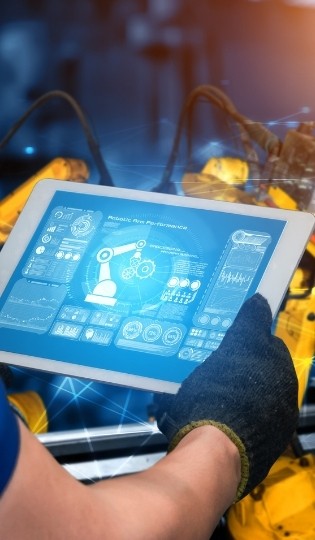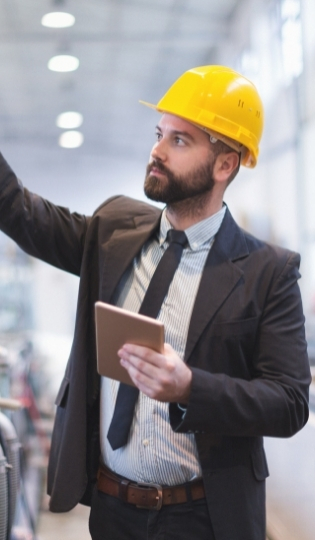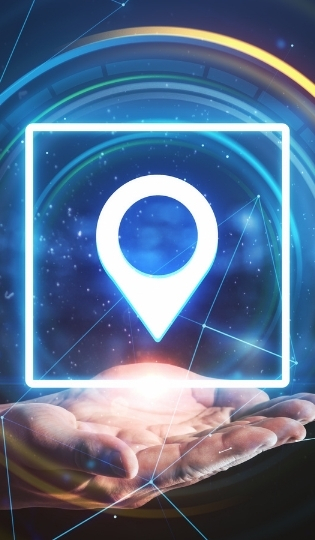Whether we’re talking about WiFi, Bluetooth or Ultra Wide Band, all three will revolutionize the way we interact with our environment.
In a few years, everything will be geolocated within a few centimeters, from the smartphone to the shopping cart in the supermarket.
The key word is happenstance. Depending on the position of objects, we will be offered different content.
We will have the information at the right place at the right time. All the content will be adaptable.
We can see it very well with the Waze application which offers us ads according to our position.
Nothing like four good examples to understand the indoor location of tomorrow!
1. Logistics in the factory of tomorrow
The logistics of tomorrow will be connected. Lots of data will be collected. The objective?
Streamline logistics, know the ETA (Estimated Time of Arrival) of assets, automated inventory or manage product expiration.
The most valuable data is certainly the position of the assets. Thanks to a badge placed on each container or product, the warehouse knows at all times where its assets are located to within a few centimeters.
Each location is carefully decided, each travel time is minimized. Logistics are optimized.
There is only one step left before automated logistics!
2. Traceability in the building sites
Construction sites in the building and public works sector are very mobile. This creates several problems for companies, especially in the management of the tool park and in the safety of employees.
It is difficult for a construction company to manage its machinery and tools. It travels from site to site depending on the need.
Sometimes, the equipment is lost for many weeks, immobilizing assets for the company. Employees waste a lot of time looking for it.
By placing a badge on each machine and tool, the company is able to locate them very quickly. The fleet is updated automatically.
Moreover, employees can find the location of their tool with a few clicks on a tablet.
Their efficiency is improved.
3. Our localized shopping cart, what does it mean?
Tomorrow in our supermarket, all our shopping carts will be localized. But why?
To offer you great deals!
As soon as you pass a product with a promotional offer, your cart will show it. No need to go to the top of the aisle to find the discounts, they will be everywhere.
But this magic cart will not bring you only that. If you don’t find a specific product, it will be able to lead you there by showing you the way thanks to a screen mounted on it.
Everything we know now with the GPS will be offered thanks to the connected shopping cart.
During rush hours, it will even be able to suggest a faster way to get around and avoid traffic jams in the aisles.
All these features are supposed to improve the comfort and the purchasing power of customers. Ethical questions are to be asked.
Does every customer want to be tracked while shopping? Won’t this shopping cart encourage consumption? Answers in a few years!
4. Hospitals, a real need
As we all know, there cannot be a nursing staff behind every patient in hospitals. This is not only because it would be useless but also because it would be very expensive.
So patients are not constantly monitored.
Whether in geriatrics or psychiatry, patients sometimes get lost and escape the surveillance of the hospital staff.
This poses many problems for hospitals in terms of patient safety and staff time.
To solve this problem, startups are working on developing location badges for dementia patients.
When the patient escapes from an area, an alert will be sent to the nursing staff to escort them home. Patients will be better accompanied when they need to be.
The staff will be relieved and can concentrate on their core business: accompanying and caring for patients.
In conclusion
Geolocation accurate to the centimetre will revolutionise the way companies work in the next few years.
It will allow medical staff to better accompany their patients, logisticians to better control their assets or even improve safety on building sites.
Many startups are working on these applications to take advantage of this data.
However, this raises many questions in terms of ethics and acceptance by employees and customers. The technology will first have to prove its effectiveness before being accepted by the general public.
